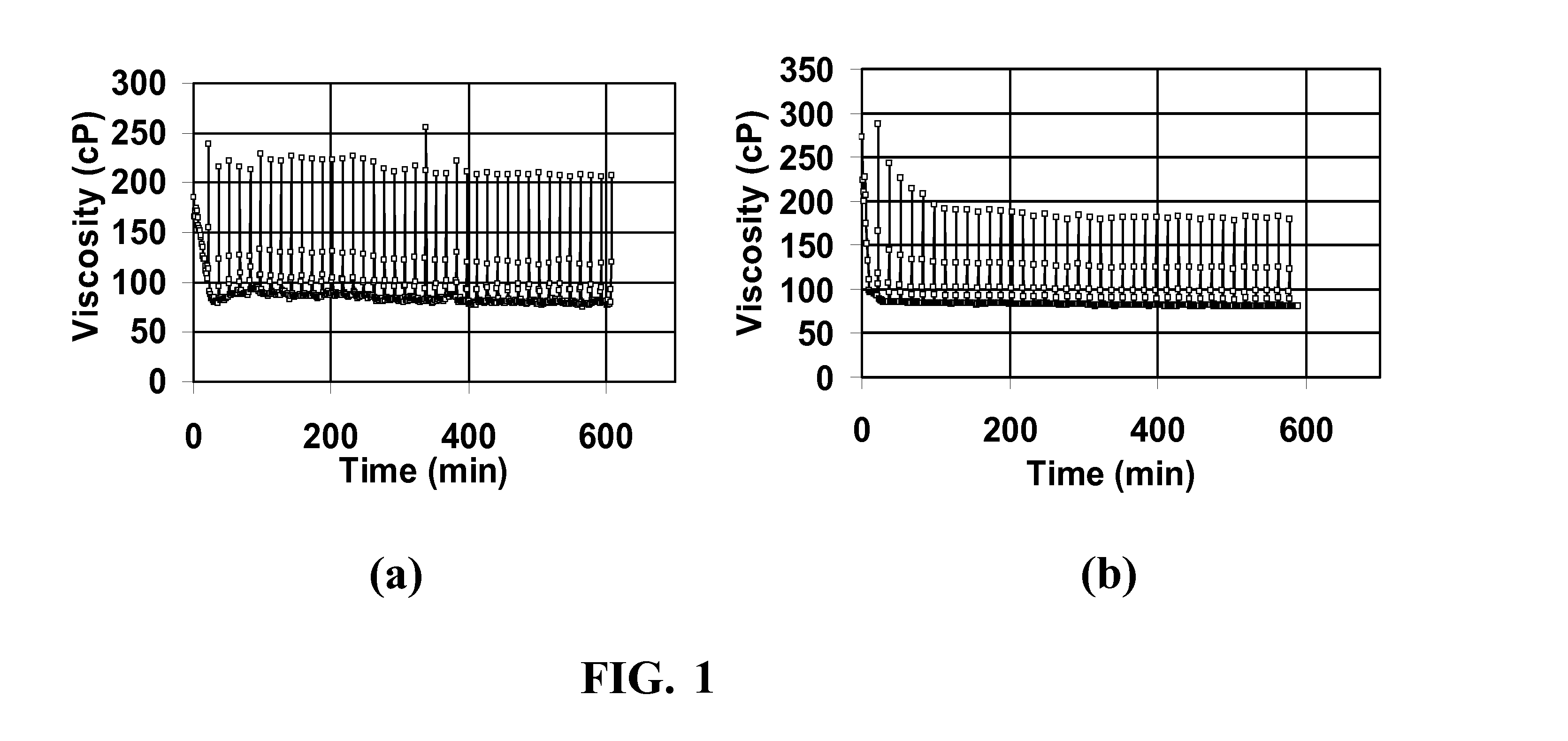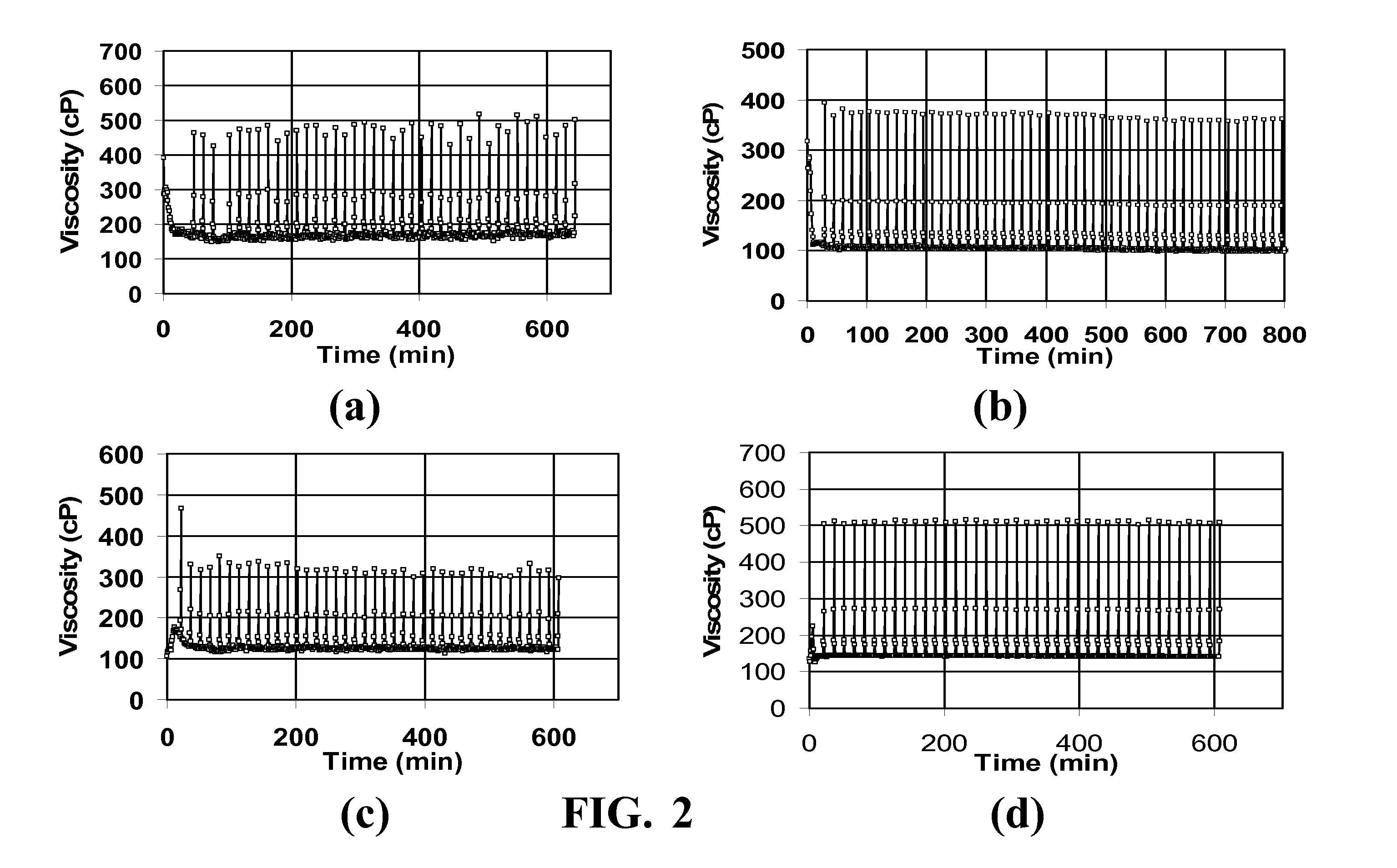Oxidative Internal Breaker for Viscoelastic Surfactant Fluids
- Summary
- Abstract
- Description
- Claims
- Application Information
AI Technical Summary
Benefits of technology
Problems solved by technology
Method used
Image
Examples
examples
[0082]Oxidizing Agents
[0083]Base Fluids (“Fluids” referred to here are gels.) All fluids were evaluated in a Fann 50 Rheometer. This instrument takes about 15-20 minutes to reach temperature, so that early portion of the data reflects heating to the final temperature. The instrument sometimes showed small regular fluctuations around the intended temperature, so small oscillations in the observed viscosities in some figures reflects that occurrence. Experiments were performed in which a viscoelastic fluid was heated to and held, usually at 65.6° C. (150° F.) or 93.3° C. (200° F.), with and without breakers and other additives. In a first set of experiments, a base fluid was made in distilled water with 4 volume % of a viscoelastic surfactant concentrate (containing about 38 weight % erucylamidopropyl dimethyl betaine surfactant, 1.1 weight % polynaphthalene sulfonate, 22 weight % isopropanol, 5 weight % sodium chloride and the remainder water), 2 weight % KCl for clay stabilization, ...
PUM
 Login to view more
Login to view more Abstract
Description
Claims
Application Information
 Login to view more
Login to view more - R&D Engineer
- R&D Manager
- IP Professional
- Industry Leading Data Capabilities
- Powerful AI technology
- Patent DNA Extraction
Browse by: Latest US Patents, China's latest patents, Technical Efficacy Thesaurus, Application Domain, Technology Topic.
© 2024 PatSnap. All rights reserved.Legal|Privacy policy|Modern Slavery Act Transparency Statement|Sitemap



